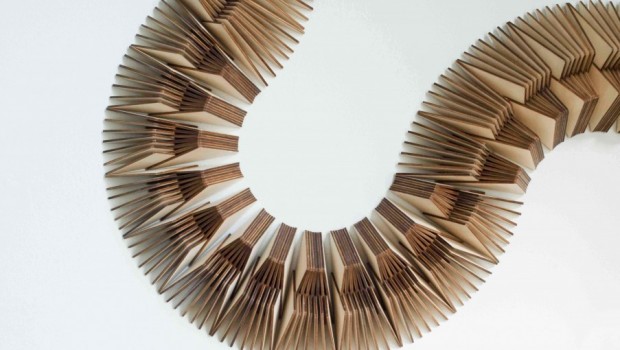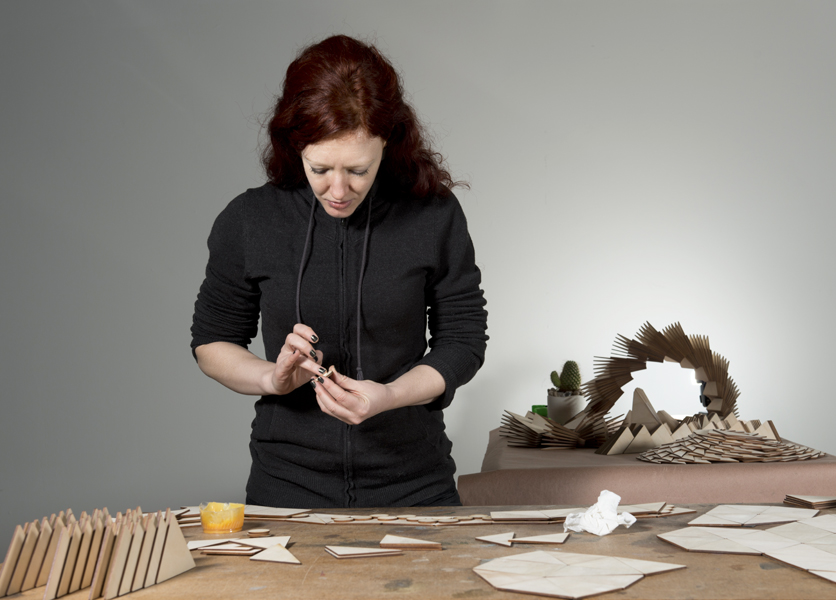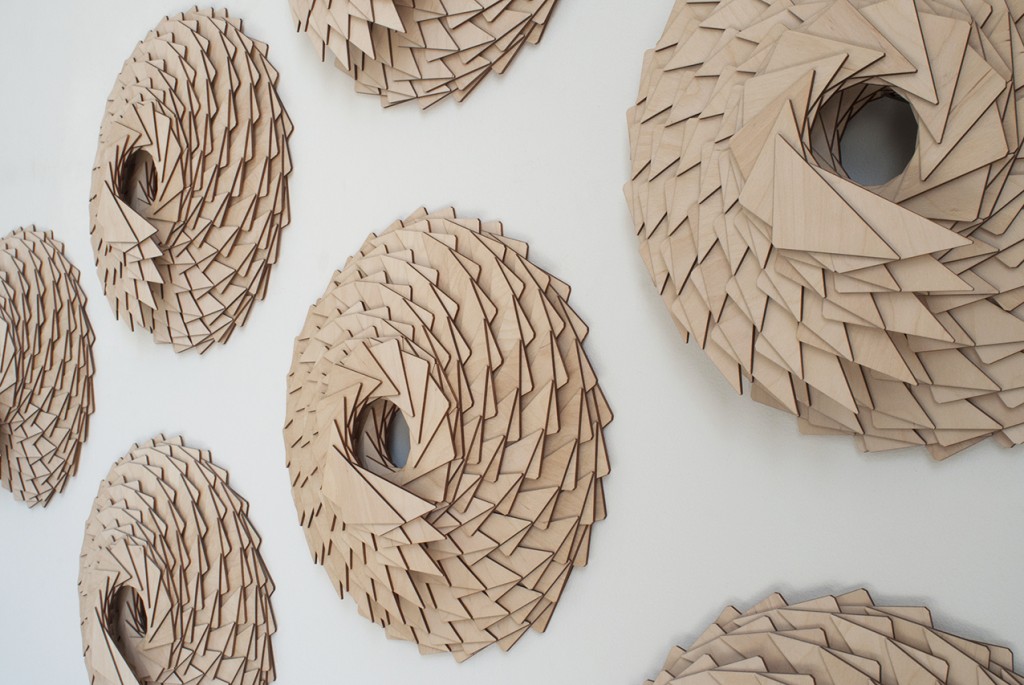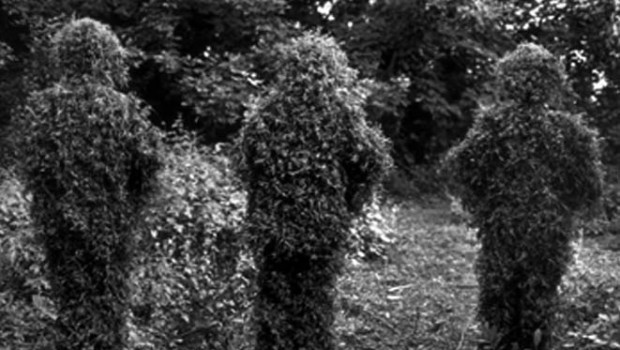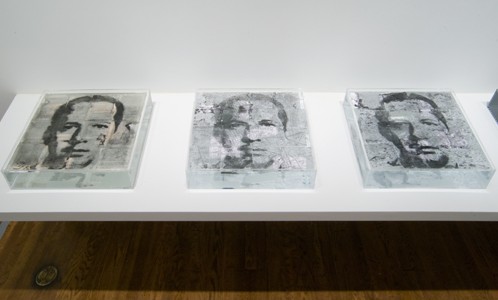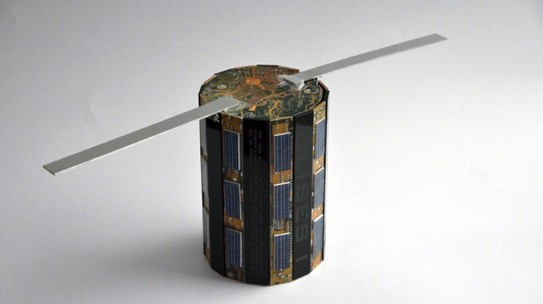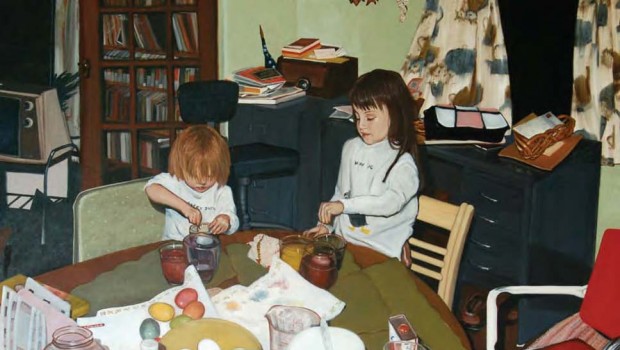The Art of Appropriation: An Interview with Susannah Mira
Gisela Heffes
Gisela Heffes: One distinctive component of your art projects is that you appropriate discarded objects and transform them into works of art. How can you conceptually define this aspect of your work and what drives you to undertake this practice?
Susannah Mira: Part of the impulse for using discarded objects in my work came from the professional dynamics of my life after graduate school, when I had the great fortune to benefit from multiple artist residencies. After completing a master’s degree in environmental art in Helsinki, Finland, I was eager to transition to a creative life that would afford me chances to work where opportunities arose. Guiding me from one place to the next, these intentional displacements imposed a practice that reflected my own concerns with environmental matters. While I aspired to make work of scale, I was not usually able to bring finished pieces with me. So using available materials was borne of environmental as well as economic and logistical reasons.
One of the first residencies I did was through Elsewhere, a former three-story thrift store in downtown Greensboro, North Carolina. Here artists are invited to live and make work from the contents of this eclectic and massive collection of stuff. One of the main guiding principles there is that this is a closed system, and while artists are there to transform and create, nothing extra is supposed to come in or out of the space. There I made my first large-scale installation utilizing huge old bolts of denim and even scrap fabric as building materials, while touching on North Carolina’s history in the textile industry. In retrospect, realizing this work was also quite pivotal because it demonstrated a way to manifest a large project from start to finish with available materials and basic institutional support.
Since then, I’ve found that I really benefit from the limitation that using found materials provides. The classical paradox is that the distance between two points is infinite, or in my case, using what you have can be wildly productive and provides both material and conceptual foci. Using massive amounts of manufacturing debris allows me to create new artifacts and a sort of pageantry from the remainders of material culture, which is another central aim. On a more personal note, my grandfather ran a scrap metal business, and I often think that salvage may just be in my blood.
GH: To what extent does the use of the disposed object –something that the vast majority of people consider garbage– intersect with questions of ecology, politics and globalization?
SM: The pieces I made at the Border Art Residency on the outskirts of El Paso, Texas speak to these issues most broadly. I can illustrate by describing one of them in detail. The process began when I was offered an abandoned 100-pound box of cotton—grown, sourced, and discarded near my former studio on the U.S.-Mexico border.
To conceptualize the piece I began reading about the environmental impact of cotton production worldwide, which revealed a crop prescribed a toxic mix of insecticides and pesticides, and of which most is genetically modified. Additional learning indicated that the by-products of harvesting cotton are cottonseed and gin trash, most of which is fed to cows or made into fillers for junk foods, just two ways that the chemical array enters the human food supply. As if the politics of accurate food labeling weren’t enough, since the passage of NAFTA more than a million Mexican farmers have lost their land due to the market saturation of U.S. cotton, among other crops, that drive prices for these goods below the cost of production. Unable to compete, small farmers have been forced out of business.
When first introduced to cotton, medieval Europeans noticed that it resembled wool, a familiar material. Told that it came from a plant, a prevalent belief held that its stalks bore diminutive sheep at each end. In contemporary life we similarly attempt to draw on the familiar to make sense of things we don’t know. And as an artist, I wonder where our blind spots are—that is to say—what do we take for granted today that may later seem as fanciful as an animal emerging from a bloom? Creating work literally out of and about everyday realities that represent absurd environmental practices, or socio-economic and/or political policies is the junction where I aim my efforts.
Entitled Great Divide, I constructed the resultant sculpture with 13-foot lengths of wire to which I connected clumped masses of raw cotton along the entire length. The wires were suspended from the aperture of a large pipe that crossed the exhibition space ceiling, a coincidental architectural feature, which really added to the piece. This is a great example of the role chance plays in all creative work.
GH: How do you find the “raw material” for your work and how do you connect with it in order to transform it into something new?
SM: In general I’ve been able to source materials through word of mouth. So for example, once an artist I know worked with a commercial laser cutter for her own project and thought that I would be interested in the heaps of perfectly similar, geometrically cut plywood mounting in the trash. Another time, a board member of the aforementioned Border Art Residency was looking at commercial real estate and shown a floor in a vacant building in downtown El Paso full of trimmings from the pre-NAFTA textile industry. In cases like these, with luck, all involved parties are communicative and amenable to scheduling time for me to come and haul off stuff.
As for the transformation process, it really is all about acts of tactile and material experimentation in the studio. Unlike an artist who may work with the same medium every day, by working with what I find, the learning curve can vary. While I’m quite drawn to flexible materials—paper, rubber, cork, some plastics, foam, felt—I don’t want to constrict myself in that way either. As described above, often my process begins by reading about the material itself, how it was harvested or made, applications it has or has filled in the past, and again, any ecological or economic factors that give it a story. Of special interest to me are those materials that reveal the history or the contemporary nature of a specific region or industry, and figuring out how to express that through form.
GH: In Latin America the cartoneros, or scavengers, emerged in the urban social scene retrieving the cardboard disposed by the middle classes and selling it to the big recycling companies. However, they are not driven by an ecological awareness but by mere survival. How is it different when you retrieve piano pieces that belonged to the American middle class and turn them into something aesthetic? Likewise, in art, the idea of “value” is key, especially for the legitimization of a work, an artist, or an aesthetic trend. What is for your work the idea of “value” behind the acquisition of piano pieces bound for the landfill and their rebirth as a necklace?
SM: The work you’re referring to is a necklace of discarded piano hammers, with a design analogous to objects of adornment from different cultures that designate status or facilitate barter. That connection is interesting to me exactly because of the notion of value, here associated with what was once the hallmark of a middle-class American home, the piano. Replaced by flat screens and keyboards, today a person is typically left with no choice but to pay someone to remove the now obsolete possession. But in the not-too-distant past, the piano was a trophy of sorts, acquired at a cost. By insinuating that the necklace components indeed still impart esteem and rank I’m reflecting on the nature of a valuation system that is temporal, as in technology or fashion, or even arbitrary.
This piece also deals with the environmental impact of material trends —analog to electronic, for example. To me it’s significant that while the piano is worthless in the home, it changes when pieces go around a woman’s neck as jewelry. Choker [Piano Practice] in particular also acknowledges that often, without quite fully realizing it, we dismiss the accomplishments of previous generations in the hunger for progress. On that note, the obvious way that value accrues in my work is through a labor-intensive handwork process. The act of conceptualizing and physically manifesting that transformation is the main difference between someone scavenging for scrap and what I do.
GH: I am also curious about other works, like Spiral, where you tackle the remnants of American manufacturing to render them into decorative objects. How does this work of art intersect with issues of economic and financial crisis and how does the idea of a spiral relate to these current problems?
SM: Spiral is a 21-foot long coil made of individually placed, small plywood triangles, collected from a laser-cutting operation in Northern Colorado while on a residency there. With it and others in the body of work, I was thinking about how plywood is essentially a cheap, everyday material that has been elevated in modern and contemporary design. Of course the labor and refinement of the material plays a role here, but nevertheless, the basic issue is that the same stuff is essentially disposable in one context while valuable in another, which struck me as an apt metaphor for the housing bubble and associated credit crisis, etc.
The sculpture I constructed is a horizontal spiral that snakes through the room, parallel to and equidistant from the ceiling and the floor. Without an upwards or downwards direction, the work is a lateral accrual of identical layers, one on top of the other. The repetition is aesthetic and meditative but the piece is also hovering in mid-air with a kind of ominous inertia. It may be marvelous to behold, but where is it going? With the edges of over two thousand triangles jutting into space, the form would be dangerous if put in motion.
Seen in another way, in creating regular, geometric constructions such as Spiral, I’m giving order to the by-products of larger enterprises whose value systems don’t make sense to me at a personal level. These pieces are the direct result of the perception of infinite resources and consumptive patterns utilized by generations to generate “success.” The sculptures climb the walls, clump in corners, hang in space, and slump on the floor in victory and failure.
GH: How does your work impact the idea of the environment, the environment per se and environmental discourse, design and art?
SM: This is a huge question so I’ll just begin by saying I’m one of many artists working with discarded material out of both environmental anxiety and the creative thrill that each new find brings. Widening the circle to include the countless people re-fashioning clothing, accessories, and furniture reveals a movement spanning the vernacular and fine arts.
Sometimes I consider the irony that alone in my studio with a pile of machined bits, I rework the material residue from highly mechanized processes, in a slow and manual fashion, invariably constructing repeated organic forms. It strikes me that in contemporary life, the oft-cited struggle against the elements manifests not by surviving storms (although given the polar vortex this may change), but by successfully navigating the widening expanse of structured environments. On a recent trip abroad, for example, I was shaken by the fact that every time I wanted to enter the subway, I was steered through a chilly, sprawling, subterranean shopping mall. The meticulous, biomorphic sculptures that accumulate in my studio are an articulation of numerous forces including ecological anxiety and omnipresent necessity to negotiate inherited (as opposed to chosen) systems and structures.
GH: Do you envision working with discarded materials in the near future?
SM: Indeed, I do. I was recently awarded a Houston Arts Alliance Individual Artist Grant and my project idea for this funding stream involves creating a new body of work from remnant materials collected in and around town, in essence suggesting a model for creative re-use relationships emphasizing artists as mediators in environmentally responsible practices. All material leads welcome!
Posted: August 25, 2014 at 10:10 pm


